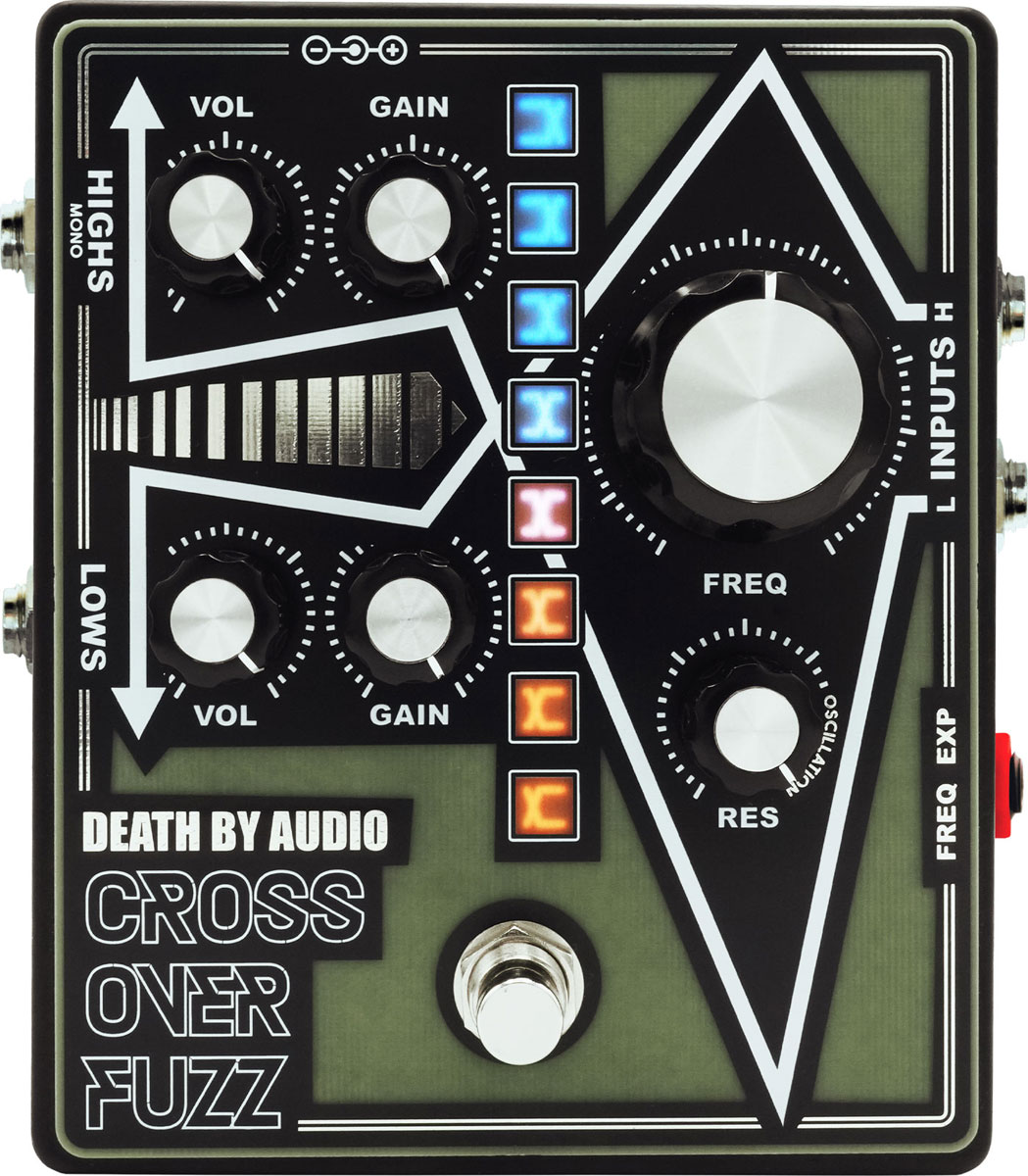Death By Audio Crossover Fuzz
Savage Dual-Band Fuzz
The Crossover Fuzz takes your signal, slices it into high and low frequencies, and then absolutely wrecks each band with Death By Audio's signature fuzz. Crank the Freq knob to sweep two analog resonant filters in tandem, carving out sonic space with surgical precision or dialing in chaotic, oscillating madness. Adjust the volume of your highs and lows separately for gritty tone sculpting or dial in your dream EQ.
With its High and Low inputs and outputs, you can use the Crossover Fuzz like no other fuzz on the planet: split your signal to different amps, isolate frequencies for creative effect routing, or use it as a stereo panner that slings frequencies across the room. You can even control the filter sweep with CV or expression, and the LED display reacts in real time to show you exactly where your crossover sits. Bonus: it looks sick on a dark stage.
Controls
- Freq - Frequency of the low-pass and high-pass filters. The low-pass ranges from 30Hz to 7.6kHz and the high-pass ranges from 80Hz-17kHz.
- Res - Resonance of the filters. Goes from smooth to hyper-focused to nasty oscillation.
- Gain (High/Low) - Amount of gain going into each filter, from clean to overdrive, to fuzz.
- Vol - Output level of each filter.
- Freq Exp - Controls the filter frequency with an expression pedal or 0-5V external CV. Automate panning, filtering, stereo sweeps, and more. The Fre knob will set the minimum frequency that your expression pedal or CV will go down to. Down = MAX RANGE. Tip - Out, Ring - 5V, Sleeve - GND.
- Light Switch (internal): Change the color set of the LEDs. Sky Light: Low-pass = Yellow / High-pass = Cyan. Cyber Light: Low-pass = Red / High-pass = Blue
Inputs & Outputs
The Crossover Fuzz features unique dual inputs and outputs, allowing for a wide range of pedalboard configurations, amp setups, and creative experimentation.
- Mono: Plug into either Input H or Input L and the Highs Mono output. This combines both the low-pass and high-pass signals into a single summed output.
- Mono to Stereo: Plug into either Input H or Input L and connect both the Highs and Lows outputs. This splits your signal into stereo: the Lows output carries the low-pass signal, while the Highs output carries the high-pass signal.
- Stereo to Mono: Plug into Input H and Input L, then connect to the Highs Mono output. This sums both the low-pass and high-pass signals into a single output.
- Stereo: When both inputs and outputs are used, Input L routes to the Lows output, and Input H routes to the Highs output for full stereo separation.


 nl
nl 
